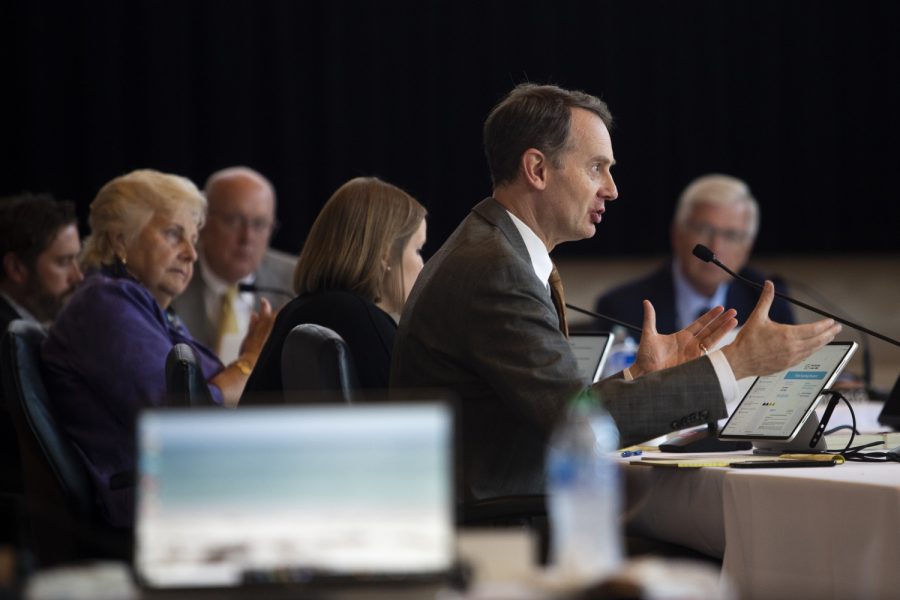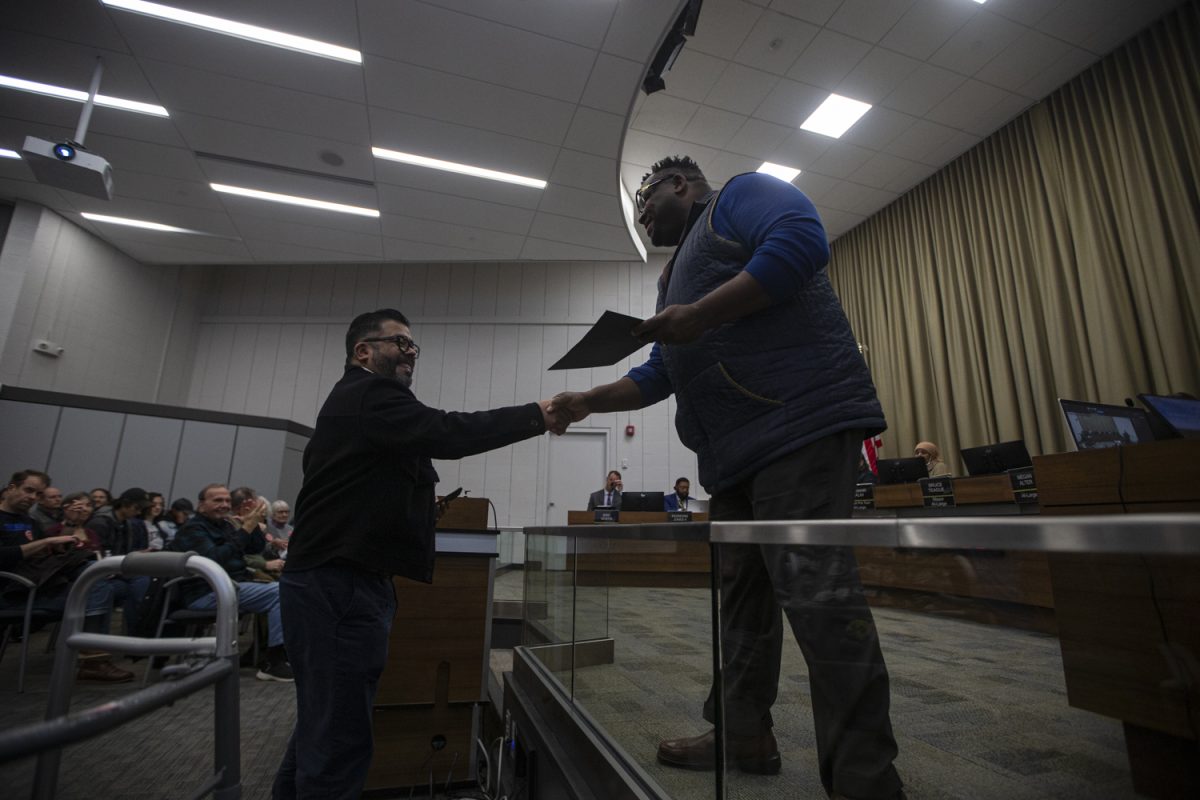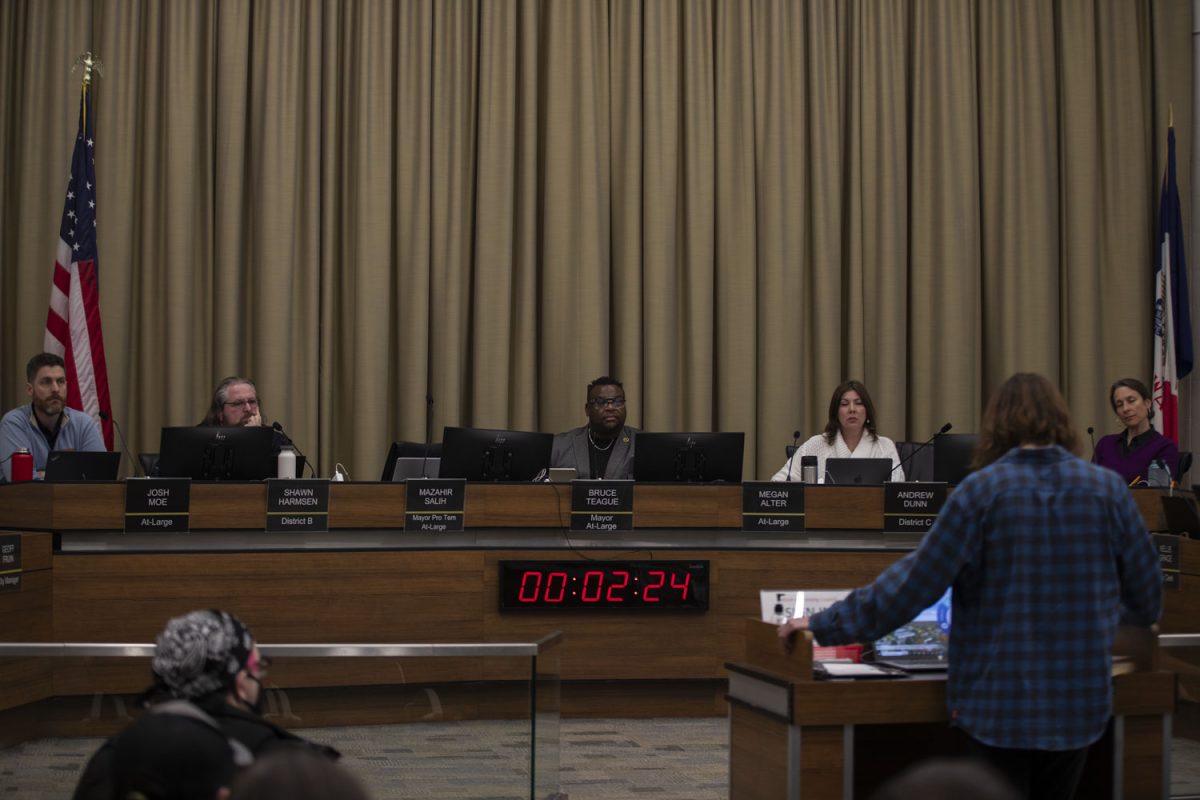As University of Iowa officials work to refine the institution’s research environment, they’re looking to motivate new faculty to conduct interdisciplinary research by linking it to tenure.
Traditionally, faculty members have a focus in their own departments and don’t do much interdisciplinary study or work outside of their primary environments, said UI Provost Wallace Loh.
However, contracts for the 100 new faculty the UI plans to hire over the next five years will include a tenure incentives for work outside their areas. Loh said tenure requirements are often a concern faculty members have when it comes to interdisciplinary research.
The UI will hire the new faculty in “clusters,” a trend common at other universities. The first cluster will be a group of 10 water-sustainability experts in the fall of 2011.
Loh said this style of hiring is key to achieving areas of focus as well as a culture of interdisciplinary research.
The new approach comes after the Task Force on Research and Creative Excellence recommended implementing eight areas for research focus at the UI.
“What it has provided me is a compass, not a detailed roadmap,” Loh said about the task force’s work. “That’s good enough.”
Loh hopes to announce at least part of this “roadmap,” which could include the announcement of the next cluster, in the coming weeks when a budget is approved by the Legislature.
The University of Wisconsin-Madison was a pioneer in cluster hirings in the late 1990s. Since then, Wisconsin has created 49 clusters with more than 140 new faculty.
Peyton Smith, the Wisconsin assistant vice chancellor for extended programs, said the program has cost roughly $18 million a year.
“One person can’t do it all,” Smith said. “We have to develop teams to do things. How they work together is a critical component to success.”
Other universities that have cluster programs include the University of Michigan-Ann Arbor, Louisiana State University, and Florida State University. National experts have also begun to stress the importance of interdisciplinary work.
“It’s increasingly seen as a way to break down disciplinary barriers,” said Robert Frodeman, the director of the Center for the Study of Interdisciplinarity at the University of North-Texas. “It’s part of a common project. It’s the way things are going in academia.”
In the areas of focus, Loh said, he believes it is unlikely all eight will be implemented as they have been presented. Many of the areas published may be too broad for now, he said.
Mercedes Bern-Klug, a UI assistant professor of social work, said aging — one of the recommended areas — is an issue present in every industry.
“We try to help students understand that, whatever they pursue, they’ll experience an aging population,” she said.
Gary Hunninghake, the director of the UI’s Institute for Clinical and Translational Science, said a number of projects funded by the National Institutes of Health are just the tip of transformative and translational technologies, another recommended areas of focus.
“Research can’t just be conducted at major institutions,” he said. “They’re going to lead the research, but the average person in the community has to be involved. Community-based research is very important for that.”






